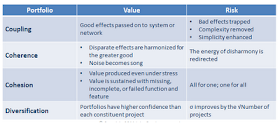Sequencing is getting things in a time-order. What comes first; what comes next?Sequencing is the first task in forming a schedule, but only after you figure out the scope.
A before B
If you understand the nature of A and that of B, then if there is a dependency between them vis a vis time order, then getting A done before B sounds easy, but sometimes it makes you wonder!
- Is there a preamble to B that should be done before A is completed?
- Are the resources for A and B in conflict or not available; such could affect the "preamble" activity.
- Can B really start after A, or are there other dependencies on the start of B?
- Do I really want B to start, or do I want to pause and start C somewhere else?
- If I start B, immediately after A, have I introduced unnecessary risk or other impacts?
Schedule depends on sequence
So, if you're thinking about sequencing, you're probably also thinking about schedule: how long it's going to take?
Or, the other way around: if you are working on a schedule, you have to get the sequence down first.
From time to time, arguments boil up about scheduling tools, like MSProject and others. The usual thinking is that these tools are "so last century" and haven't kept up with more agile planning techniques.
And, worst of all, these older tools promote waterfall (gasp!) scheduling, which is demagoguery for finish-to-start precedence.
Finish-to-start precedence is a sequencing concept. If you pooh-pooh such precedence, I challenge you to put up the roof before the walls are in place.
It's all about the sequencing
First, you have to know what you are going to do. To wit: you can't sequence that which you don't know about, and furthermore, even then there may be sequencing errors you discover once you understand the full extent of the scope.
For any project, step 1 is to assemble (or define) the elements of scope by some affinity criteria. (Using the roof-after-walls example, get all the roof stuff in one grouping, and all the wall stuff in another grouping. That way, you can sequence the roof group after the wall group.)
Back to MSProject
MSProject is a good planning tool for sequencing. You can work in the gantt-chart mode and sketch out the big picture pretty rapidly, setting up key milestones as schedule goals. You need not use the precedence mode at all.
However, there is a bridge too far:
If you plan in too much detail, MSProject and other such tools are way too tedious to use for maintenance of the schedule once the project is under way.
As a practical matter there will be "mico-dependencies" that crop up, which are worked in real time; micro-loops for feedback and checking results against the evolving construction baseline, etc. that are way too expensive to schedule, status, and maintain as they change.
My advice: at the PMO level focus on the major sequences that drive toward value-add milestones.
Buy them at any online book retailer!








